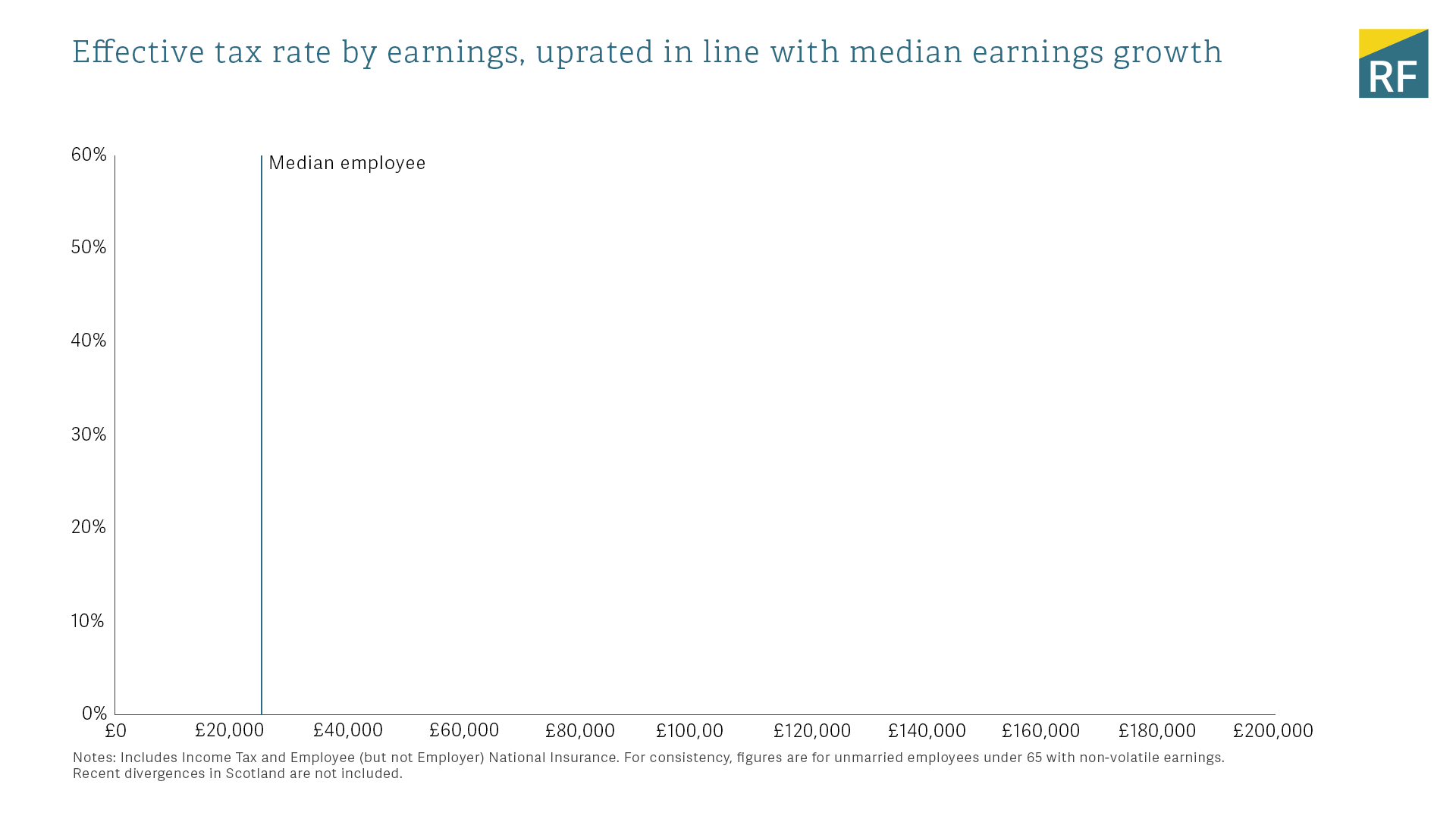However, first up I am looking at the latest piece from the Resolution Foundation (RF), which compares the income tax proposals from Boris and Jeremy.
The chart below focuses on who pays what rate of tax on earnings (income tax and national insurance), and how that’s changed since the 1970s.
We’re all paying lower taxes on our earnings than our predecessors (while paying more other forms of tax). The initial phase of cuts in the 1980s were very top heavy (the highest income tax rate fell from 83 per cent to 40 per cent), while tax cuts in the pre-crisis 1990s and 2000s focused more on middle earners (basic rate income tax went down more than national insurance went up). The big post-crisis trends have been further income tax cuts for middle (but not low) earners and a big change – the first increase in taxes on the top earners for a generation.

I have argued previously that taxes (not just those on earnings) have to rise to fund the future spending demands of an ageing Britain, and this chart shows that was probably the view which held sway under Philip Hammond (2020 line).
However, if you click on the RF’s clever chart you will see that the promised outcomes change considerably. Under Labour there would be tax rises for higher earners, while there would be tax cuts for higher earners under the Tories.
In my opinion the best tax-cutting way to boost the UK economy would be to provide tax cuts for the lower earners, because they are more likely to spend their additional disposable income.